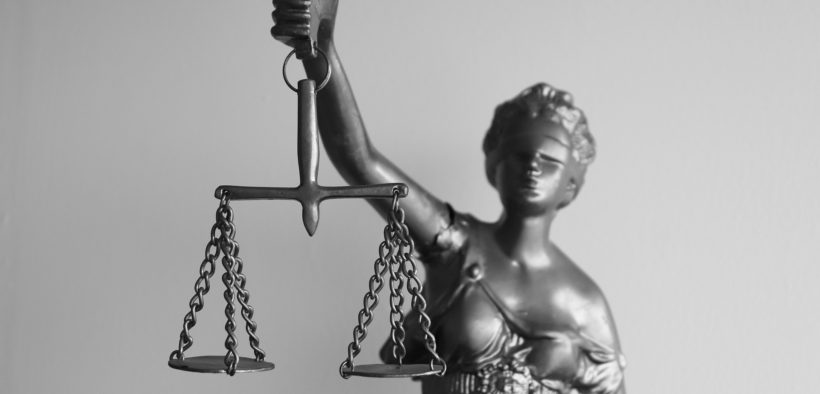Roe v. Wade: Analyzing its Reversibility under Stare Decisis
Share

Image by Ezequiel Octaviano from Pixabay
After Roe v. Wade solidified a woman’s right to choose to have an abortion in 1973, women across the country consider their bodily autonomy an indispensable right and symbol of equality. This ruling has prevailed for nearly half a century, granting women a vital sense of control over their bodies and jurisdiction over their futures. However, in light of the recent confirmation of Associate Supreme Court Justice Amy Coney Barrett, speculation arose regarding a potential reversal of Roe.
The fate of the milestone case has been a topic of concern for those who opposed the rapid confirmation of Justice Barrett, as the Supreme Court is now occupied by a six to three conservative majority. Justice Barrett, a Catholic who considers her faith “central to her identity,” previously demonstrated opposition to the ruling in Roe as she reportedly once “signed onto an ad calling for overturning Roe and its ‘barbaric legacy.’”
Justice Barrett’s anti-abortion stance was noted by Republican members of Congress, including Senator Josh Hawley of Missouri, who prior to her confirmation claimed: “this is the most openly pro-life judicial nominee to the Supreme Court in my lifetime.” Although Barret did not express her point of view when asked about the case during her confirmation hearings, many still speculate that her appointment to the Supreme Court might lead to the overturning of Roe, diminishing women’s access to secure abortions and contraception.
The decision in Roe has remained a topic of debate since the early 70s, but it is a monumental symbol of equity in the United States. However, the Court will soon be faced with the central question: should this landmark case be overturned based on the doctrine of stare decisis? Stare decisis is a Latin term meaning “to stand by things decided,” and it is applied by the Supreme Court as the concept of obeying precedent as a means of “contributing to the actual and perceived integrity of the judicial process.” The Supreme Court remains faithful to this doctrine by applying the opinions of precedent cases to resolve and/or arrive at contemporary rulings.
Advocates of the Roe decision argued that the ruling should not be overturned on the basis of stare decisis. The Supreme Court abided by the stare decisis doctrine when deciding Roe itself, as the Court observed the ruling of a case settled in 1965, Griswold v. Connecticut. The precedent of the right to self-autonomy and privacy as highlighted in Griswold was utilized as a subject of consideration in the historic decision of Roe.
Similarly, in determining cases subsequent to Roe concerning female reproductive rights, the Supreme Court followed stare decisis by adhering to the famed case’s resolution. Among such cases is Planned Parenthood of Southeastern Pa. v. Casey, Governor of Pennsylvania, decided in 1992. In this lawsuit, appellants contested the constitutionality of five provisions within the Pennsylvania Abortion Control Act of 1982 on the grounds that they restricted and burdened females’ swift access to an abortion. The Court’s opinion emphasized the importance of adhering to the precedent set by Roe and concluded that the right to an abortion upheld by such a verdict did not decay in relevance.
In order to answer the central question of Roe’s fate today, one must first understand the principle of stare decisis and what can compel the Court to overlook such a principle. The answer is found in the Supreme Court’s opinion for Planned Parenthood. The Court stated, in a detailed list, that to consider reversing a case’s decision, the ruling itself must be unworkable in contemporary situations, the case’s central rule must be discounted or irrelevant in modern-day society, or the “changes in factual underpinnings” must render the central holding of the case obsolete. Moreover, the Court acknowledged in Planned Parenthood that although Roe has engendered ample opposition, it has not been proven unworkable and that the “factual underpinnings of Roe’s central holding nor the Court’s understanding of it” have changed. Furthermore, reversing the Court’s decision in Roe would not only unjustifiably breach the rule of stare decisis, but it would wane the Supreme Court’s ability to operate properly under the rule of law by undermining the significance of precedent. In the last 47 years, the right to an abortion, as established by Roe, has been perceived as monumental because it has facilitated female healthcare and enabled women to grasp control of their destinies: a power that was not afforded to them prior. Thus, overturning this landmark decision would transport society back to a time when female rights were scarce, contradicting the current progressive nature of this nation, and endangering the health and lives of many women. However, modern women will not be keen to loosen the tight grasps they have over their futures and will not easily forsake the sovereignty that the precedent of Roe has granted them over their own lives.


Want to get involved?
Connect with us! Connect with us!